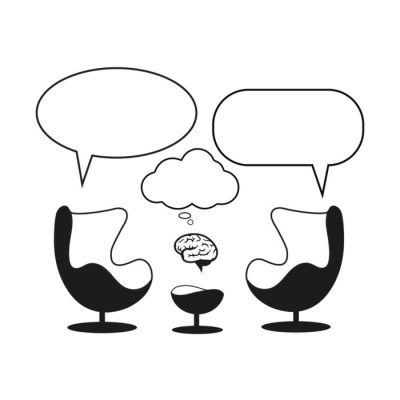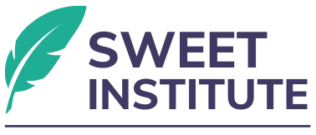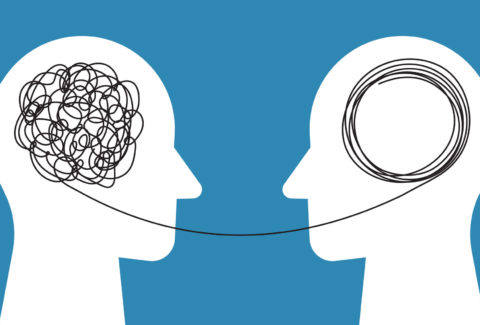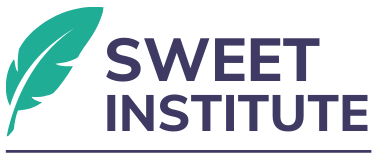Rapport is Everything: How NLP Helps Us Speak the Client’s Language

Rapport is Everything: How NLP Helps Us Speak the Client’s Language
The meaning of communication is the response you get. – NLP Presupposition
In clinical work, we often talk about the importance of rapport. But what is rapport, really? Is it chemistry? Comfort? Trust? In NLP, rapport is defined not as a vague feeling, but as a replicable, observable, and buildable process—a foundation of connection that can be deliberately created through awareness of language, physiology, and sensory preferences.[1]
In our second session of our NLP for Clinicians series focuses on how matching, mirroring, and pacing can transform even the most resistant or disconnected therapeutic relationships. We’ll introduce the idea that rapport is not luck—it’s a skill.
Rapport: A Neurobiological and Linguistic Phenomenon
Rapport isn’t just about being friendly—it’s about creating safety and resonance. When a client experiences rapport, their nervous system begins to regulate, their defenses soften, and their openness to insight increases. In NLP, we build this connection through subtle strategies:
- Mirroring[2] posture, tone, and tempo
- Matching sensory language (visual, auditory, kinesthetic)
- Pacing a client’s experience before leading them toward change
These methods draw from the neuroscience of mirror neurons, polyvagal theory[3], and language processing. In other words, NLP strategies align with what we know helps people feel seen and understood.
Speaking the Client’s Language: Representational Systems
Each of us has a preferred way of experiencing the world. NLP calls these representational systems[4]:
- Visual: “I see what you mean.”
- Auditory: “That sounds right to me.”
- Kinesthetic: “It just doesn’t feel right.”
- (Less common in therapy: olfactory/gustatory)
When clinicians speak in the client’s dominant system, understanding and trust deepen. Imagine telling a highly kinesthetic client to “look at things differently.” They might nod, but feel unseen. If instead you said, “What would it feel like if something shifted?”—now you’re speaking their language.
A Clinical Scenario
A clinician is working with a client who appears distracted and disengaged. The clinician realizes they’ve been using fast-paced, abstract language. The client, however, speaks slowly and uses feeling-based expressions. By slowing down, matching the client’s tempo, and shifting to kinesthetic phrases (“How does that sit with you?”), the clinician sees a subtle but powerful shift: the client leans in, becomes more expressive, and begins to open up.
This is NLP in action—not manipulation, but attunement.
Pace, Then Lead
Another powerful NLP concept is pacing and leading.[5] Before introducing a new idea, you first “pace” the client’s experience—validating and aligning with their current reality. Only then do you gently “lead” them toward a new possibility.
This sequence reduces resistance. It tells the client, “I’m with you”—which makes them more likely to come with you.
Clinician Reflection
Where do you instinctively push instead of pace? Where might you be missing a client’s signals because your language or tempo is mismatched?
This week, try this:
- Notice the words your client uses most—are they visual, auditory, or kinesthetic?
- Mirror their posture, tone, or rhythm subtly—not to mimic, but to connect.
- Pace their current emotional or cognitive state before offering a reframe.
When you start with where someone is, you increase your chances of guiding them toward where they can be.
Next Week: Sensory Language and Representational Systems – How People Code Their Reality
We’ll explore how clients build their inner world using sensory-based systems, and how you can use language to align with and reshape that world.
Call to Action:
Ready to build instant, authentic rapport—even with “resistant” clients?
Join us for the NLP for Clinicians series. The next session is on Monday, May 19, from 1–2 PM.
Discover how to decode the way people perceive reality—and how you can use that insight to transform clinical conversations.
Reserve your spot today and start seeing beneath the surface.
Come curious—leave connected.
[1] Sandoval, Vincent A., and Susan H. Adams. “Subtle skills for building rapport: Using neuro-linguistic programming in the interview room.” FBI L. Enforcement Bull. 70 (2001): 1.
[2] Clabby, John, and Robert O’Connor. “Teaching learners to use mirroring: rapport lessons from neurolinguistic programming.” Fam Med 36.8 (2004): 541-3.
[3] Porges, Stephen W. “Polyvagal theory: A science of safety.” Frontiers in integrative neuroscience 16 (2022): 871227.
[4] Petroski, Alan. Representational systems in the neurolinguistic programming model. Kent State University, 1985.
[5] Heap, Michael. “Neuro-linguistic programming.” Hypnosis: Current clinical, experimental and forensic practices (1988): 268-280.






